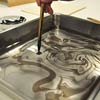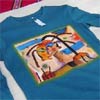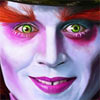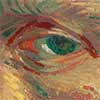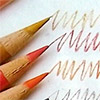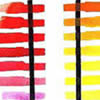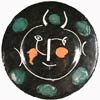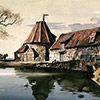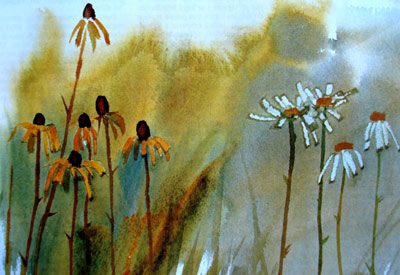
Watercolor has the following advantages:
- The works painted with watercolor are very alive, they express life.
- It is one of the best techniques for the representation of water, liquids, atmospheres and gaseous effects.
- The watercolor technique has a very beautiful color and fusion of colors, thanks to the water.
- If you know how to work well, the light in watercolor is radiant and powerful.
- The graphic aspect of the watercolor is outstanding. The texture of the material, for example coarse-grained paper, gives the work a great plastic quality.
- You can work the drawing very well.
- We can do mixed media with watercolor.
- This technique allows you to develop sensitivity in a very subtle way. Expands smoothness, attention to detail, emotion, composition, and depth. Everything that the imagination requires.
Watercolor has the following disadvantages:
- The paint material or support must absorb water. This technique is based on water, it works with the fluidity of the paint that, when it dries, remains fixed. This implies a limitation of materials. We must use papers, cardboard, not primed fabrics and woods that absorb water.
- When paper or cardboard is used as a support, we are using fragile materials that require care and prior preparation. These materials must be prepared before painting, if we do not do it, the water will deform them. And while painting, you must work carefully to avoid paper tears, cracks, perforations and ripped. In addition, the final work must be protected from light, as the sun discolor. Of course, the finished painted work must be glazed to protect the paper from dust, mites or other insects, accidents and toxic air.
- The large format is limited due to the above limitations. It would be quite uncomfortable to paint a 50 meter paper. Although it is not impossible, of course.
- Lastly, watercolor is very difficult by itself. Working with water takes a lot of practice, you have to control both the brush and the thickness of the liquid.
Watercolor Keys
To paint Watercolor artworks we must have these qualities:
- Control of the technique by painting from light to dark. It is not an additive technique like oil where we can correct many times by adding painting. It is about painting from the most illuminated to the darkest.
- Control of the fluidity and thickness of the paint.
- Control of the support, the paper and his drying capacity. And therefore, time control, patience to allow the support to absorb.
- Knowing how to paint with the brushstroke, ripped, sponges, etc. The shapes are made directly with the brushstroke.
- Knowing how to make reservations in the support and then remove the lights and shapes. You must learn to reserve areas, even with masking fluids.
- To ensure that the paper is not damaged in any of the millions of possible ways that there are.
- Do not abuse or exceed paint and brushstrokes. Overpainting is one of the most common mistakes.
- Apply just what is necessary and what is definitive. Everything in its correct place and meticulously measured. Control of the composition with the reservation system already mentioned. This is one of the techniques where you should think more before painting.
- And above all, knowing how to choose the subject or pictorial motif.
Examples of watercolor paintings
Watercolors made with the dry brush technique
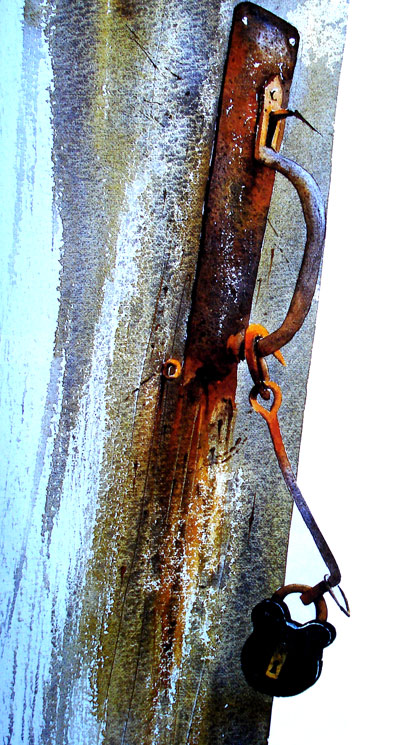
Richard Bolton artworks.
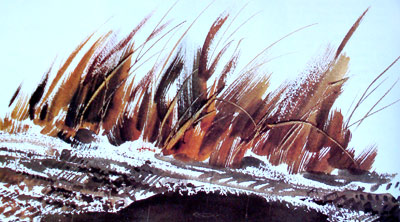
Artwork made with chinese goat hair brushes ond bamboo that provide greater capacity to the dry brush technique.
Painting with stroke
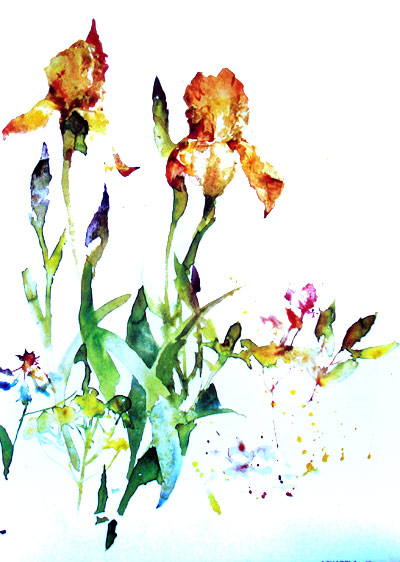
Charles Reid Yellow lilies
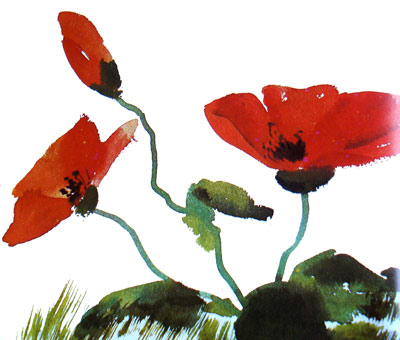
Poppies painted with touches of short and wide strokes, made with a twist of the wrist.
Watercolor is dodgy but very grateful. Especially if you have been grateful with the store of materials (paper and brushes).
Cheer !!


